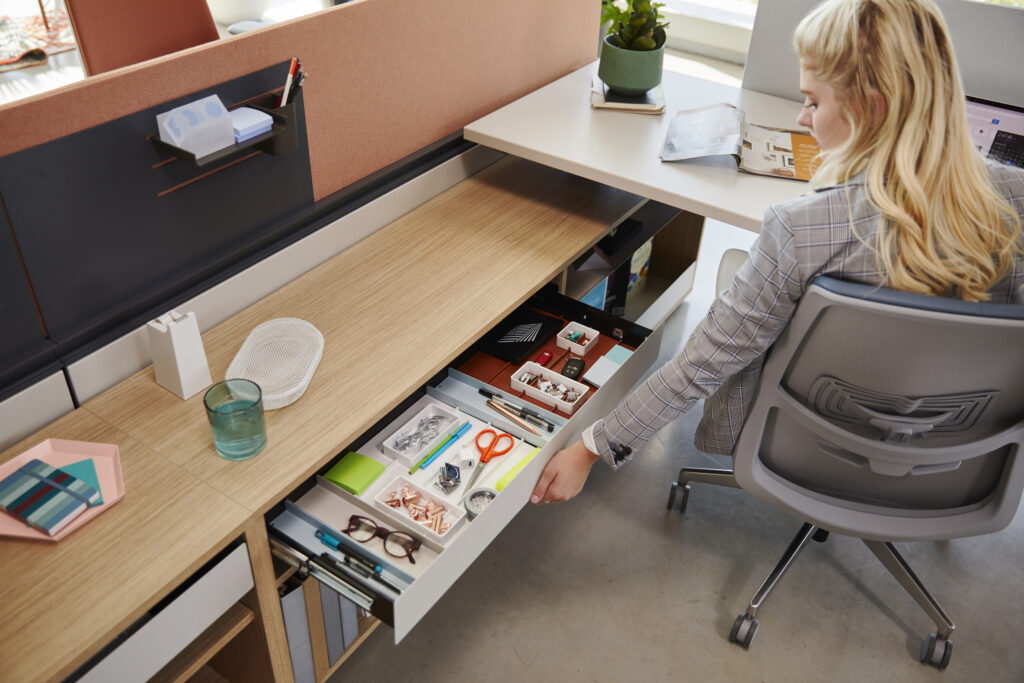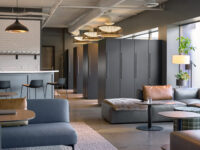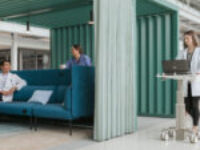
Cluttered workspaces often lead to wasted time, reduced productivity, and unnecessary stress. In many cases, the source of this disorganization can be traced back to the furniture itself. The design, function, and layout of office furniture directly influence how teams interact with a space, how efficiently it is maintained, and how easily it supports day-to-day work. The right commercial office furniture can reduce clutter, improve flow, and create a more purposeful environment.
Functional Storage Solutions
The shift to digital tools eliminated the need for bulky filing cabinets, but in many offices, that transition also led to the disappearance of storage altogether. Minimalist desks without drawers may look modern, but they often leave employees with nowhere to store essential items. As a result, surfaces become cluttered with cables, notebooks, water bottles, and personal belongings.
Reintroducing integrated storage into desks, shared spaces, and meeting rooms provides simple, accessible solutions that reduce visible clutter without sacrificing style. Think credenzas with built-in cabinets or conference tables with hidden compartments for supplies. These elements support clean lines and open layouts while maintaining functionality.
Storage Solutions for Hybrid Models
Many hybrid offices operate on a desk hoteling model, where employees reserve workstations as needed rather than using the same desk each day. While this increases space efficiency, it also requires staff to carry their materials back and forth, adding time and hassle to their daily routines.
In these environments, centralized locker systems provide a secure place for employees to store personal and work-related items between visits. This not only reduces visual clutter but also supports a more consistent experience for hybrid teams. The addition of dedicated personal storage helps employees settle in quickly, even when their location varies day to day.
Designing for the Senses
An organized office does not need to feel rigid or sterile. Sensory design principles can be used to create spaces that feel vibrant without becoming overstimulating. Through the use of intentional color, tactile materials, and varied lighting, workplaces can remain clean and visually engaging without relying on excess furniture or decorative clutter.
In high-energy spaces such as brainstorming rooms or design studios, bold accent walls and textured upholstery can spark creativity while keeping surfaces clear. Focus areas, on the other hand, benefit from muted tones and clean finishes that encourage concentration without distraction. These design choices support the function of each space while maintaining a tidy appearance.
Multipurpose Furniture
Single-purpose furniture often occupies space without offering flexibility. Replacing these pieces with multipurpose solutions increases both usability and organization. Conference tables that convert into breakout zones, mobile storage units that double as seating, or lounge chairs with swivel work surfaces can accommodate a wider range of work styles while minimizing the footprint of the furniture itself.
This approach reduces the need for excess furnishings and supports a more streamlined floor plan. In addition, when teams are not limited by rigid layouts, the overall flow of the space improves, making it easier to keep areas clean and efficient.
Modular Wall Systems
Modular walls offer a practical way to create structure in open offices while maintaining the flexibility to adapt over time. These systems can be configured to define quiet zones and support collaboration without requiring permanent construction.
Beyond their flexibility, many modular wall systems offer added benefits such as built-in shelving, writable surfaces, or acoustic panels. These features help support the organization at a structural level while contributing to the visual clarity of the space. In offices where open floor plans dominate, modular walls provide much-needed definition without adding bulk or reducing natural light.
Built-in Charging Stations & Cable Management

Tangled cords and unassigned chargers often create a disorganized appearance, even in otherwise tidy workspaces. Without proper cable management, surfaces become cluttered quickly, and power access becomes a shared frustration.
Furniture with built-in charging stations offers a clean, integrated solution. Desks and tables designed with hidden cable routes and recessed power hubs allow teams to keep devices charged throughout the day without disrupting the visual flow of the room. In shared areas, these features reduce reliance on power strips and eliminate the need for temporary fixes that add to the mess.
Ready to Rethink Your Office Organization?
Commercial furniture plays a larger role in office organization than it often gets credit for. From structural elements like wall systems to small details like hidden storage, every selection has the potential to reduce clutter and support a more efficient workplace.
For organizations looking to improve the functionality and appearance of their office, starting with the furniture provides a long-lasting foundation for success. Our team specializes in commercial furniture and workspace design services that support productivity, flexibility, and a clean aesthetic. Talk to our experts of office design in Columbus, Ohio about how the right furniture can create a more organized office, starting with the structure, not just what’s on the surface.



